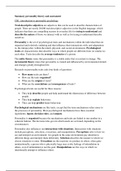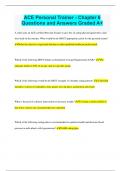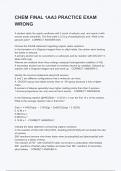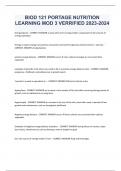Samenvatting
Summary Personality Theory and Assessment Year 1.5 Psychology
- Instelling
- Vrije Universiteit Amsterdam (VU)
This is a summary for the course Personality Theory and Assessment of the first year of psychology. The summary is based on the book Personality Pscyhology by R. Larsen, D. Buss, A. Wismeijer, and J. Song, and information from the lectures. By studying with this summary, I received an 8.6 for the e...
[Meer zien]









